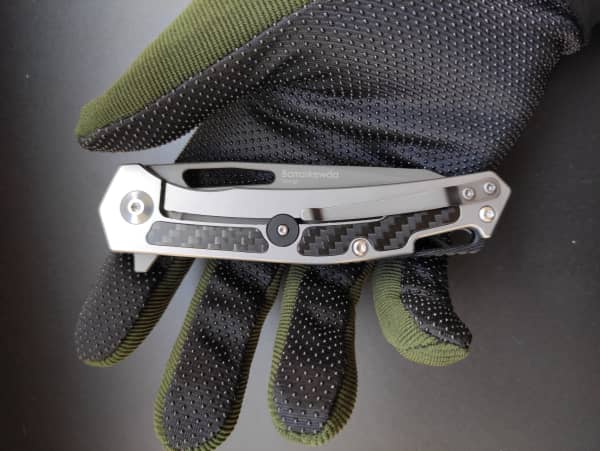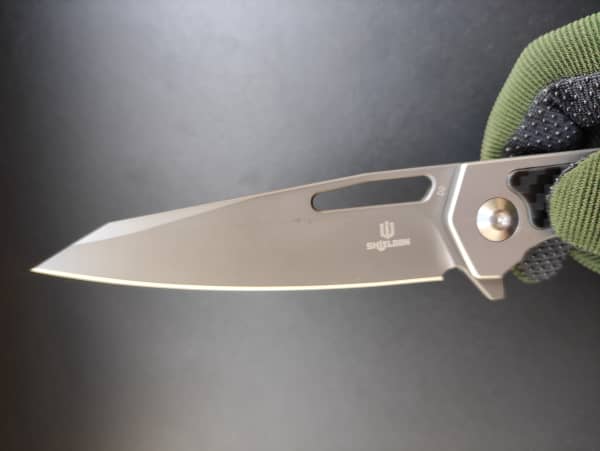Common Pocket Knife FAQs

Pocket knives are very popular among knife enthusiasts, and it is easy to see why when you look at how they are designed. They are small, convenient, and portable. You could have one in your breast pocket, and no one would even know you are carrying one on you. Their ability to retract into the handle and be hidden away makes them the ultimate tool to have for emergency situations.
But despite their popularity, there are many aspects of pocket knives that many people don’t understand. The following is a neat compilation of all the possible pocket knife FAQs that may help you understand folding knives a little better if you wish to own the best pocket knife in the future.
Pocket Knife FAQs

What is a pocket knife?
Also called a folding knife, a pocket knife is any type of small knife whose blade or multiple blades can be folded back into a space that comes in their handles. Once they are folded, they can be carried easily in the pocket as a concealed weapon. They are versatile and reliable tools that can be used for a wide range of activities indoors and outdoors.
How many types of pocket knives exist?
The number of pocket knives varies from time to time and from place to place. What is considered a pocket knife in one area may pass off for another type in another place. But on a broader scale, there are about eight distinct types of pocket knives that include the following.
- Multitool: A versatile knife that has multiple tools like screwdrivers, blades, scissors, pliers, tweezers, nail files, and so many others. It is a jack-of-all-trades type of pocket knife.
- Canoe Knife: A folding knife that has the shape of a canoe, arching downwards in the middle with two blades on either side that fold into each other neatly.
- Pen Knife: These are tiny pocket knives that have handles that resemble pens, and they come with sharp, slim blades with pointed ends and are used for cutting up small items.
- Trapper Knife: This is a folding knife that almost resembles the canoe knife, only that it has a shape that goes up then comes back down with the blades located on one end only. They are ideal for skinning animals.
- Congress Knife: This is the opposite of the Canoe knife. It curves upwards in the middle and comes with a number of blades and other tools on either end, most times four blades, each with a unique shape for a unique purpose.
- Sheepsfoot: This is a thick pocket knife that looks like a multifunction knife but has two blades, each with incisions. The knife was used to trim the hooves on sheep in the past, hence the name sheepsfoot. It is ideal for whittling.
- Tanto Knife: This is a special folding knife from Japan that has a unique shape. It has a straight blade that ends in an angled tip. It is one of the most aggressive-looking pocket knives around.
- Tactical Knife: This is a tiny defensive knife that has a clever design that starts with a very grippy and stylish handle and a very solid blade with a curved and sharp point.
Are pocket knives legal?
That depends on your location. Each country on the planet has its own laws regarding knives, and this covers pocket knives too. In some places, it is legal to carry the knife without any issue as long as you are not a threat and have no prior criminal record. In other places, they are illegal, and being found with one can land you in deep trouble. It is up to you to read up on the knife laws of each place you plan to go to just to be on the safe side of the law. You can read up on some of the common knife laws in some of the popular destinations on earth here.
Is a pocket knife a weapon?
Technically speaking, anything can be a weapon depending on the intention of the wielder. A pocket knife is a weapon but a poor one compared to fixed blades. You may be able to deter an assailant with it, but the level of damage you can inflict on them will depend more on your skill to use the knife more than the knife itself. Most pocket knives are small and tend to fold in on themselves in extreme situations. That said, many countries have laws that classify them as weapons even when they are too small.
What is a pocket knife lock?
A pocket knife lock is a mechanism that keeps the blade in place when the knife is open. It is what stops the knife from folding back in when it comes in contact with an object; it allows the blade to stay open until the lock mechanism is released. There are five types of lock mechanisms found in pocket knives.
- Liner Locks: This is a simple lock that snaps into place and locks the blade in place from the bottom. To close the blade back into place, you simply push the liner out of the way.
- Frame Locks: This is a mechanism that locks the blade and part of the frame itself to engage the tang of the blade to keep things locked until the user decides otherwise.
- Slip Joint Locks: This is an old mechanism found in early knives that uses tension divided by a spring to keep the blade open. It is not very strong, and blades that utilize this locking style should be limited to light tasks.
- Lockback Locks: This is another locking mechanism that uses springs to provide the tension to keep the blade open. It has a locking arm situated along the handle spine that comes with a hook that slips into a pre-made notch on the back of the blade to keep it open.
- Midlocks: This is a mechanism that operates in the same way as a lockback, only that the lock in this instance is located in the middle of the handle. It has better safety features than lockbacks.
How much do pocket knives cost?
There are many factors that determine the price of a pocket knife. This ranges from the materials used, the size of the knife, and the design. The prices range from as low as $30 to $250 and beyond. A $30 pocket knife has all the basic features you would expect in a knife, but they are made with inferior materials, so they tend to have short lives. High-end pocket knives come laden with extra features, are made with better materials like carbon and Damascus steel, and they also feature well-designed handles.
What’s the purpose of serrations?
Serrations are the jagged edges you see on some knives just before the sharp cutting edge takes over. Many people assume they are there for aesthetic values, but that’s not the case. Serrations are there to help you deal with tougher materials when the normal cutting edge has become blunt. They especially come in very handy when cutting ropes and chords as they act like little saws.
What does assisted opening mean?
Pocket knives with assisted opening feature blades that open at the simple push of the blade. The mechanism is common in switchblades, and they became popular through movies. You may have seen those knives that people flip open just before attacking. That’s how assisted opening operates. It is fast and reliable.
Do knife handles matter?
Yes, they matter a lot. A handle gives you the grip on the knife, and if that is solid, then the knife is more efficient in your hands. Pocket knives use all types of materials for their handles; this ranges from wood, rubber, plastic, metals, and other unique materials. The better the handle, the higher the price of the knife and vice versa. Therefore, when looking for a pocket knife, don’t disregard the type of handle used.
Can you hunt with a pocket knife?
Hunting with any type of knife, be it a giant fixed blade or a pocket knife, is a tall order. It requires you to come into contact with your prey, and the likelihood of an animal letting you creep up that close is next to zero. You will need a long-range weapon to be able to hunt, and this includes arrows, guns, and spears. However, pocket knives do come in handy after the kill has been made. Some of the best skinning knives are pocket knives by nature as they are nimble, nifty, and come in the right shape that goes under the sin without damaging the flesh or the pelt.
Conclusion
Knowing your knives will save you a lot of problems out there. Here are thousands of knife brands in the market that make very good products, and finding one that fits your needs can be hard. However, learning more about pocket knives in advance will give you the power to make the right decision. For more information on knives in general, check Shieldon(oem knives) for valuable tips.

